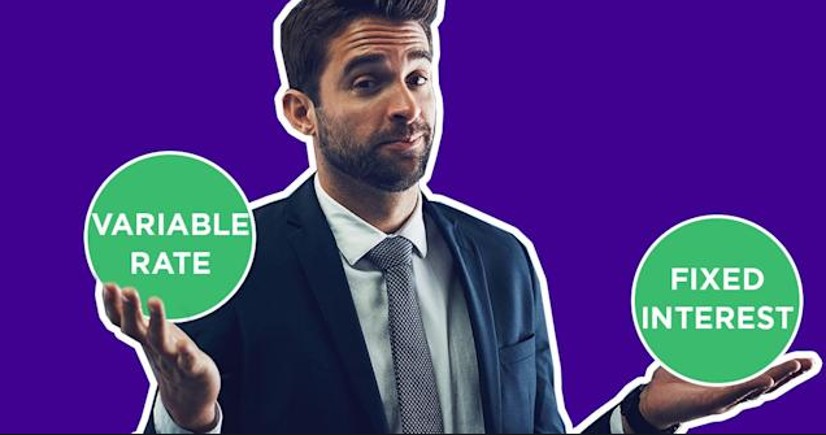Business
Fixed vs. Variable: Choosing the Right Interest Rate Structure for Your Business Loan

For entrepreneurs embarking on business ventures or expansions, small business loans stand as invaluable resources. Amidst the array of financing options, a critical decision surfaces: choosing between a fixed and variable interest rate loan. This decision can significantly impact your financial strategy and business stability.
In the intricate landscape of business finance, where each decision shapes the trajectory of your enterprise, understanding the nuances between fixed and variable interest rates becomes paramount.
This guide aims to unravel the complexities, providing clarity to empower you in making an informed choice tailored to your business aspirations.
Understanding the Interest Rate: A Primer
To navigate the nuances of fixed and variable interest rates, it’s essential to first comprehend the fundamental concept of interest. Interest is essentially the cost a lender imposes for extending a loan, usually presented as an annual percentage. The dynamics of this financial landscape are shaped by the borrowed amount, creating a fluid scenario.
Now, when considering whether your small business loan features a fixed or variable interest rate, the determining factors include the specific lender and the chosen terms of the loan. This distinction sets the stage for the subsequent exploration of these two interest rate structures.
Fixed Loan Rates: A Beacon of Stability
Fixed loan rates remain constant throughout the loan term, ensuring that the interest rate remains unchanged. This stability extends to monthly payments, providing a predictable financial environment for effective business planning and budgeting.
Example of a Fixed Rate Business Loan
Samantha owns a popular fitness studio and wants to open a second location. She secures a 100K business loan with a fixed 13% interest rate. This guarantees the same principal and interest payment until the loan is fully paid. Perfect for simplifying budgeting without worrying about market swings.
The Pros of Fixed Rate Loans
➢ Predictability and Peace of Mind
With unchanging payments, managing cash flow is a breeze. And you stay shielded from surprises as rates float up or down.
➢ Transparent Terms
Details like repayment totals and timelines remain crystal clear over the lifecycle. Easy to forecast for.
Catching the Con Side
➢ Higher Starting Rates
Lenders may charge more upfront since they can’t later adjust for market drops. So fixed loans can initially cost more.
➢ No Benefit from Market Dips
Say rates decline while you borrow. Well, you’d be stuck paying the original fixed percentage with no option to refinance at lower prevailing rates.
➢ Early Repayment Penalties
While allowed, fully paying loans early often incurs fees. So flexibility comes at a price.
Mastering Variable Rate Loans
Variable rate loans fluctuate based on market changes. Their advantage is starting with very low teaser rates. But payments can swing up or down over the borrowing journey depending on forces like federal rate moves.
Navigating these dynamic demands financial agility and appetition for some risk. The reward is seizing initial low offers. Just be ready to budget for uncertainties ahead.
Example of a Variable Rate Business Loan
Imagine John, a small retail store owner in need of a $20,000 loan for inventory. Opting for a variable rate loan, the lender sets an initial interest rate of 10%, calculated from the prime rate (8%) plus a 2% margin. If the prime rate fluctuates, so does John’s interest rate, impacting his monthly payments.
Pros of Variable Loan Interest Rates
➢ Initial Lower Interest Rate
Starts with a lower rate, reducing the initial financial burden.
➢ Potential Cost Savings
Offers savings if rates remain low or decrease during the loan term.
➢ Ideal for Short-Term Borrowing
Suited for short-term financial needs, providing flexibility.
Cons of Variable Loan Interest Rates
➢ Monthly Payments Affordability Risk
Payments may become challenging if rates rise significantly.
➢ Risk of Interest Rate Hikes
Exposure to market fluctuations poses a risk of increased rates.
➢ Limited Control Over Loan Costs
Less predictability and control over overall loan costs.
Choosing the Right Path: Fixed vs. Variable Interest
Selecting between a fixed and variable interest rate for your small business loan necessitates a careful examination of various factors. This decision is a balancing act that involves assessing your business needs, financial position, and risk tolerance. Opting for a fixed interest rate ensures a stable and predictable monthly payment, making it an attractive choice for those operating within tight budget constraints.
Conversely, a variable interest rate may be more appealing to individuals comfortable with navigating uncertainty, offering potential interest savings and flexibility for short-term financial needs. Ultimately, the choice hinges on aligning these considerations with your broader business strategy and goals.










